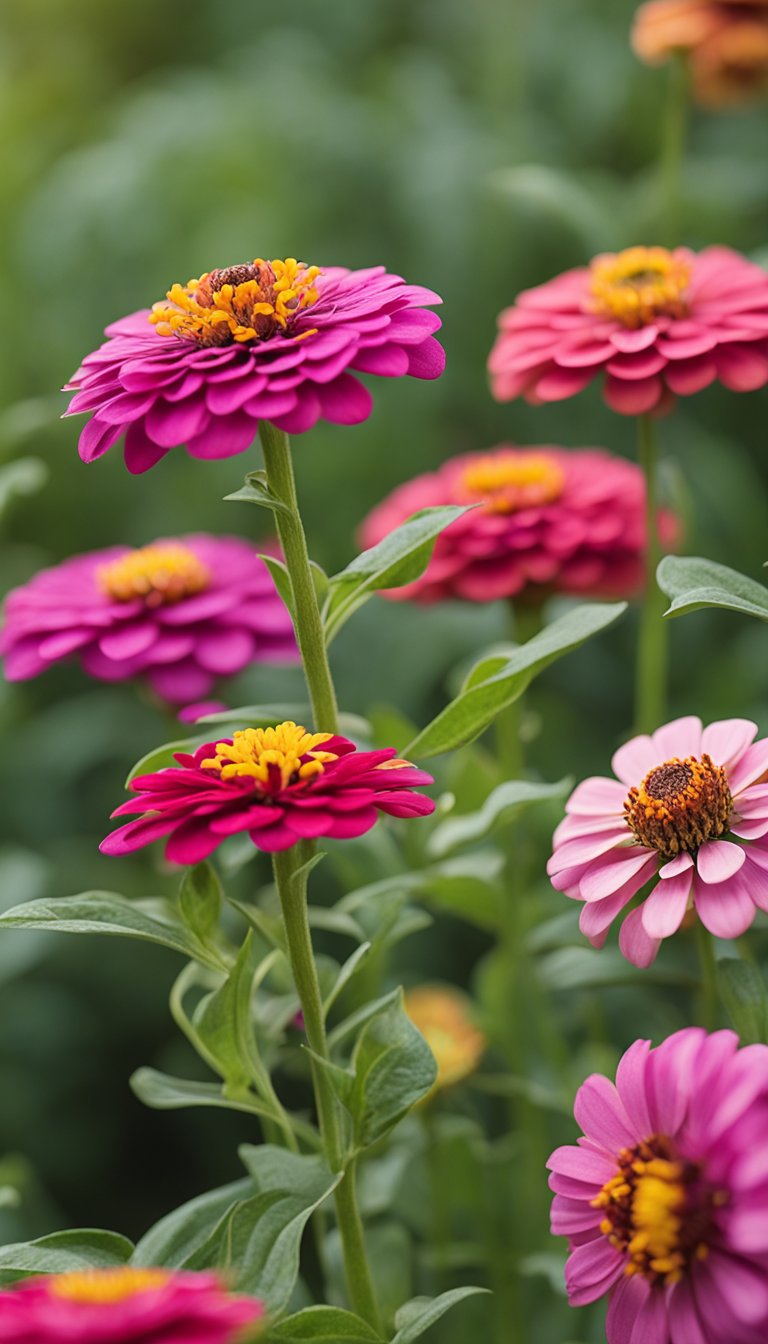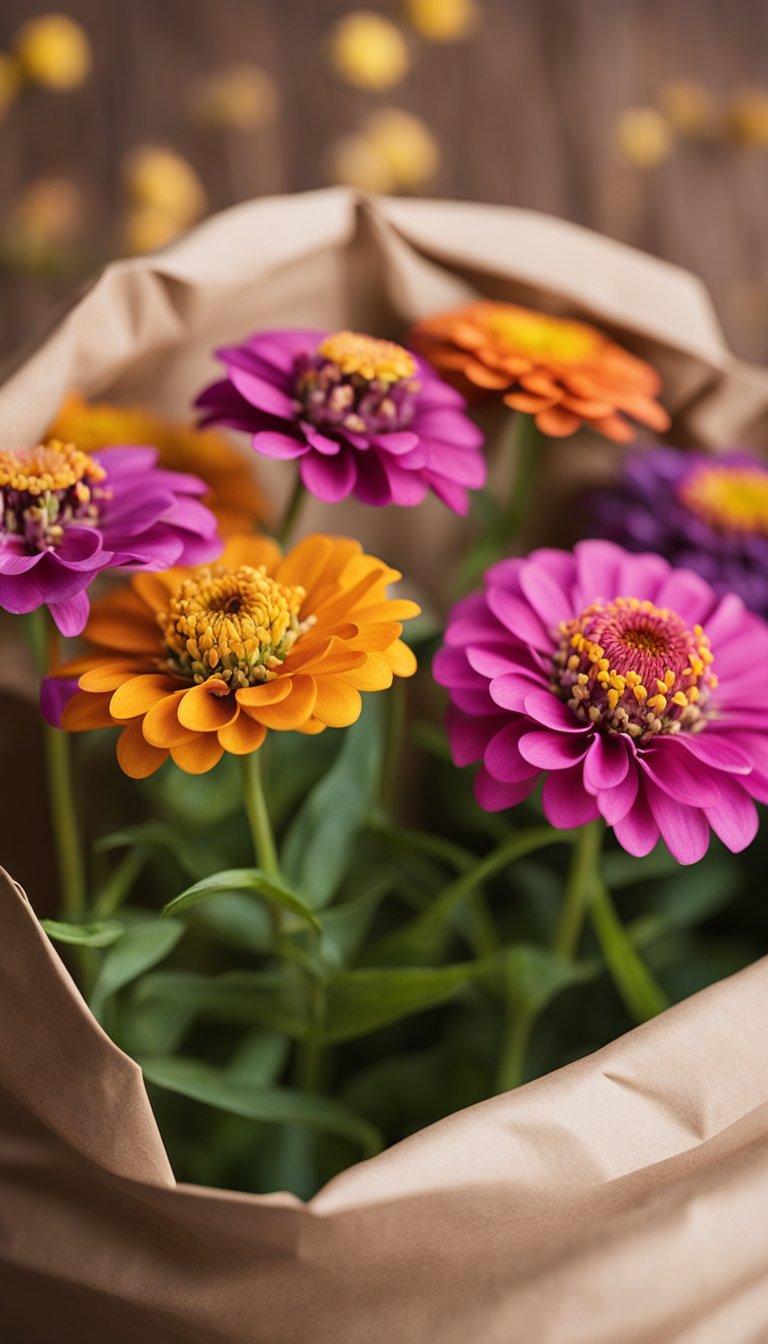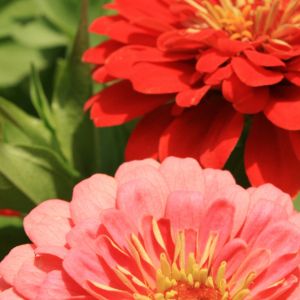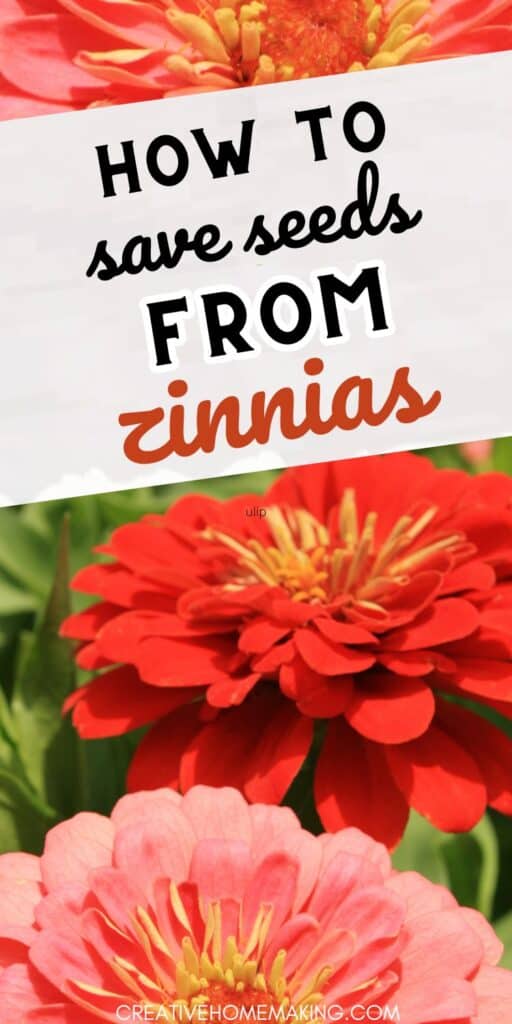If you’re a gardener who loves zinnias, you know how beautiful and vibrant these flowers can be. What you may not know is that you can save the seeds from your zinnias to plant again next year.
This post may contain affiliate links.
Saving seeds is an easy and cost-effective way to grow more of your favorite flowers without having to buy new seeds each year. In this article, we’ll show you how to save seeds from zinnias so you can enjoy their beauty year after year.
Zinnias are an annual flower, which means they complete their life cycle in one growing season. If you want to grow zinnias again next year, you’ll need to save the seeds from this year’s flowers.
Saving seeds from zinnias is easy and can be done in just a few simple steps. Not only is it a great way to save money, but it’s also a fun way to get more involved in your gardening hobby.
In the following paragraphs, we’ll guide you through the steps to save seeds from your zinnias so you can enjoy their beauty for years to come.
Related Article: How to Grow Zinnias from Seeds: A Beginner’s Guide
Understanding Zinnias and Their Seeds
Zinnias are beautiful flowers that come in a wide variety of colors, shapes, and sizes. They are easy to grow and are a popular choice among gardeners.
If you want to save zinnia seeds for future planting, it’s important to understand the different varieties and their seed differences.
Related Article: When to Plant Flowers for Spring: A Helpful Guide
Zinnia Varieties and Seed Differences
Zinnias come in two main types: open-pollinated and hybrids. Open-pollinated zinnias are pollinated naturally, while hybrid zinnias are created by crossbreeding two or more different zinnia varieties.
When it comes to saving zinnia seeds, it’s important to note that hybrid zinnias may not produce true-to-type offspring. This means that the seeds from a hybrid zinnia may not produce the same flower as the parent plant.
On the other hand, open-pollinated zinnias will produce offspring that are very similar to the parent plant.
Zinnia seeds also come in different colors and sizes. Some zinnia varieties produce large seeds, while others produce small seeds. When saving zinnia seeds, it’s important to make sure you are saving seeds from the correct variety, as different varieties may have different seed sizes and colors.
The Importance of Seed Saving
Saving zinnia seeds is important for a number of reasons. First, it allows you to preserve the genetics of a particular zinnia variety. This is especially important for open-pollinated zinnias, as they may not be readily available in nurseries or garden centers.
Related Article: Are Zinnias Edible? A Friendly Guide to Zinnia Flowers as Food
Second, saving zinnia seeds is a great way to save money. Instead of having to buy new zinnia seeds every year, you can save seeds from your existing plants and use them for future planting.
Finally, saving zinnia seeds is a great way to share your love of gardening with others. You can give seeds to friends and family, or even start a seed swap with other gardeners in your community.
Understanding zinnias and their seeds is important if you want to save seeds for future planting. By knowing the different zinnia varieties and their seed differences, you can ensure that you are saving seeds from the correct plants.
And by saving zinnia seeds, you can preserve the genetics of your favorite zinnia varieties, save money, and share your love of gardening with others.

Best Time to Harvest Zinnia Seeds
If you want to save seeds from your zinnias, it is important to harvest them at the right time. Here are some tips on when and how to harvest zinnia seeds.
Identifying Seed Maturity
The first step in harvesting zinnia seeds is to identify when they are mature. Zinnia seeds are ready to harvest when the flower head has dried out and turned brown.
You can also tell if the seeds are mature by gently pressing on the flower head. If it feels firm and the seeds do not fall out easily, they are ready to be harvested.
Related Article: How to Deadhead Zinnias: A Friendly Guide
Conditions for Harvesting
Late summer and early fall are the best times to harvest zinnia seeds. Make sure the plants are healthy and free from mildew before harvesting. Choose a dry day to harvest the seeds, as moisture can cause them to mold.
To harvest the seeds, cut off the flower head and place it in a paper bag. Label the bag with the date and variety of zinnia. Hang the bag upside down in a warm, dry place for a few weeks to allow the seeds to dry out completely.
Once the seeds are dry, you can store them in an airtight container in a cool, dry place until you are ready to plant them.
By following these simple steps, you can successfully save zinnia seeds and enjoy beautiful blooms year after year.
Related Article: When to Pinch Zinnias: A Quick Guide

How to Harvest Zinnia Seeds
Zinnias are beautiful flowers that come in a variety of colors and sizes. They are easy to grow and make great cut flowers. If you want to save zinnia seeds for next year’s garden, you can easily do so by harvesting the seeds from the flower heads. Here’s how to do it:
Collecting Seeds from Flower Heads
- Wait until the zinnia flower heads have dried out on the plant. The petals will have fallen off and the center of the flower will be dry and brown.
- Use pruners or scissors to cut off the flower head from the stem.
- Hold the flower head over a bowl and gently shake it. The seeds will fall out of the center of the flower and into the bowl.
- If some of the seeds are still attached to the flower head, you can gently rub them off with your fingers.
Cleaning and Preparing Seeds for Storage
- Remove any debris or chaff from the seeds by gently blowing on them or using a fine mesh strainer.
- Spread the seeds out on a paper towel or newspaper and let them dry completely for a few days.
- Once the seeds are dry, store them in an airtight container such as a glass jar or plastic bag. Be sure to label the container with the type of zinnia and the date the seeds were harvested.
By following these simple steps, you can easily harvest and save zinnia seeds for next year’s garden.
Storing Zinnia Seeds Properly
When it comes to storing zinnia seeds, it is important to do it properly to ensure that the seeds remain viable for future planting. Here are some tips on how to store zinnia seeds properly.
Choosing the Right Containers
The first step in storing zinnia seeds is to choose the right containers. You can use airtight containers, such as glass jars or plastic containers, to store the seeds.
Alternatively, you can use paper envelopes to store the seeds. Make sure that the containers or envelopes are clean and dry before storing the seeds.
Conditions for Optimal Seed Storage
Once you have chosen the right containers, it is important to store the seeds in the right conditions to ensure their viability. Zinnia seeds should be stored in a cool, dry place. Avoid storing them in areas that are exposed to direct sunlight, as this can cause the seeds to lose their viability.
To maintain the quality of the seeds, you should also make sure that the storage area is well-ventilated. This will prevent the seeds from becoming damp and developing mold or other fungal diseases.
When storing zinnia seeds, it is important to label the containers or envelopes with the date of storage and the variety of the seeds. This will help you keep track of the seeds and ensure that you use them before they lose their viability.
By following these simple tips, you can store zinnia seeds properly and ensure that they remain viable for future planting.
Tips for Growing Zinnias from Saved Seeds
Sowing and Germination
When sowing zinnia seeds, it is important to choose a well-drained soil that receives direct sunlight. You can start the seeds indoors or directly sow them into the ground.
If you choose to start them indoors, use a seed-starting mix and keep the soil moist until the seeds germinate. Zinnia seeds typically germinate within 5-7 days.
To improve germination rates, you can soak the seeds in water overnight before planting. This will help soften the seed coat and increase the chances of successful germination.
Maintaining Plant Health and Vigor
Once your zinnias have germinated, it is important to water them regularly. Zinnias prefer well-drained soil, so make sure not to overwater them. Aim to keep the soil moist, but not waterlogged.
To ensure your zinnias remain healthy and vigorous, provide them with plenty of sunlight. Zinnias require at least 6 hours of direct sunlight per day to thrive.
If you notice your plants becoming leggy or stretching towards the light, it may be a sign that they are not receiving enough sunlight.
When your zinnias have finished blooming, allow the flowers to dry on the plant. Once the flowers have dried, you can harvest the seeds by removing the dried flower head and shaking out the seeds.
Store the seeds in a cool, dry place until you are ready to plant them again.
Frequently Asked Questions
What’s the best method to harvest seeds from zinnia flowers?
The best method to harvest seeds from zinnia flowers is to wait until the flower head has dried out completely and the petals have fallen off. Then, gently shake the flower head over a container to collect the seeds.
How can you tell if zinnia seeds are viable for replanting?
To test the viability of zinnia seeds, place a few seeds in a damp paper towel and seal it in a plastic bag. Keep the bag in a warm place and check after a week. If the seeds have sprouted, they are viable for replanting.
What steps should you follow to save zinnia seeds indoors?
To save zinnia seeds indoors, start by collecting the dried flower heads. Remove the seeds from the flower head and spread them out on a paper towel in a warm, dry place for a week.
Once the seeds are completely dry, store them in an airtight container in a cool, dry place.
Can you collect seeds from zinnias that have been cut and how?
Yes, you can collect seeds from zinnias that have been cut. Simply wait until the flower head has dried out completely and the petals have fallen off. Then, gently shake the flower head over a container to collect the seeds.
How do you effectively separate seeds from chaff in zinnias?
To separate seeds from chaff in zinnias, place the collected seeds in a fine mesh strainer and shake gently. The chaff will fall through the mesh while the seeds will remain in the strainer.
Will zinnias grown from saved seeds retain their original colors?
Zinnias grown from saved seeds may not retain their original colors, as the color of the flower is determined by the genetics of the parent plant. However, you can still expect a beautiful display of colorful blooms from saved zinnia seeds.
Follow my zinnia garden board on Pinterest.



